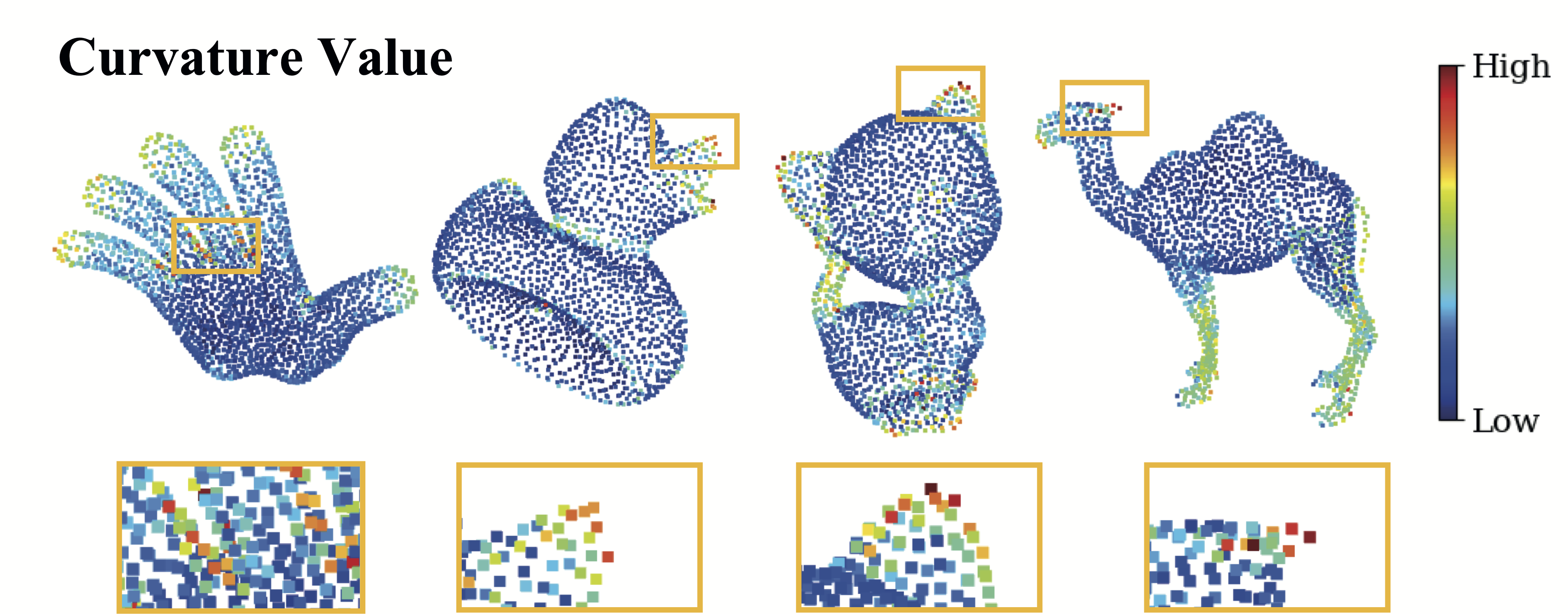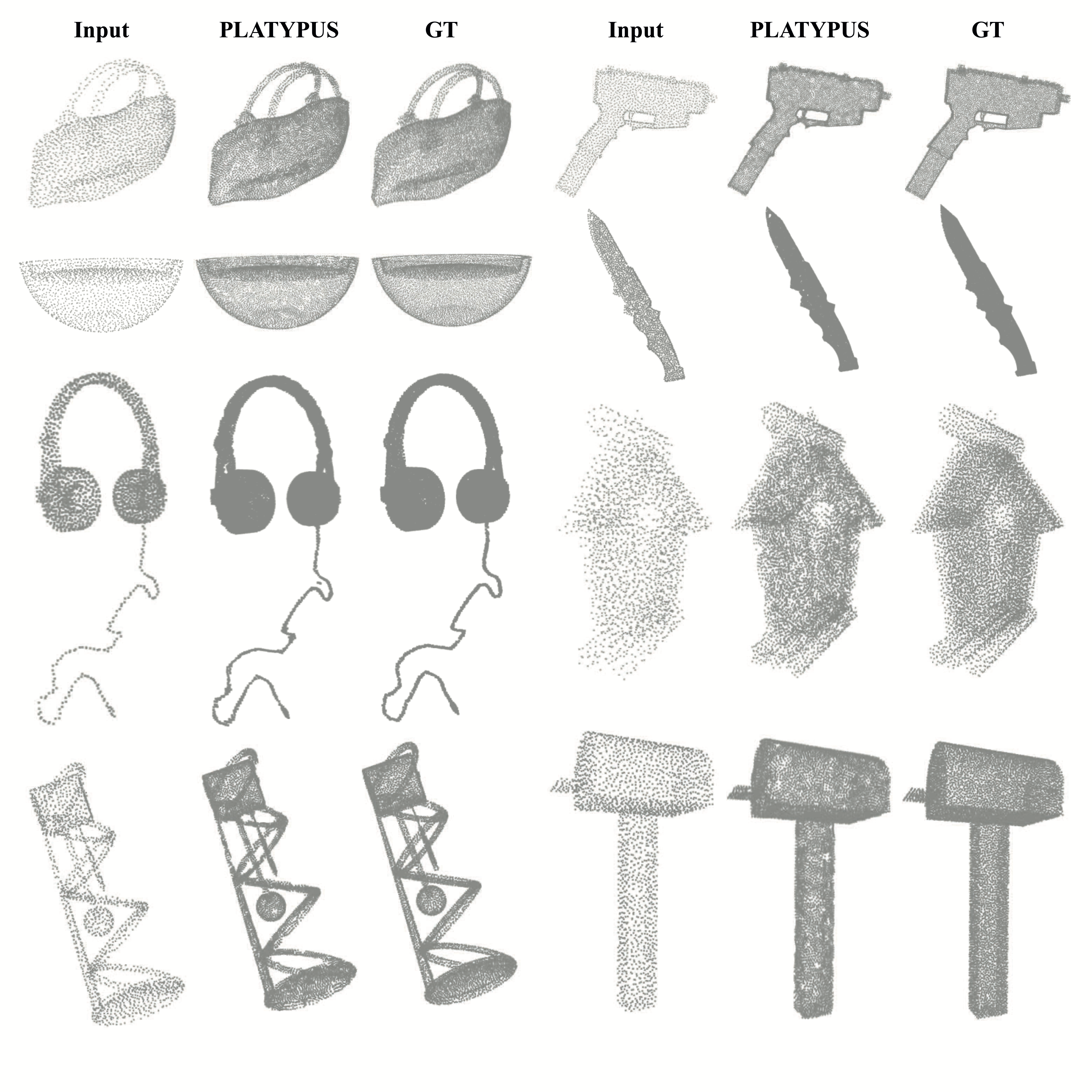
Abstract
3D point clouds are increasingly vital for applications like autonomous driving and robotics, yet the raw data captured by sensors often suffer from noise and sparsity, creating challenges for downstream tasks. Consequently, point cloud upsampling becomes essential for improving density and uniformity, with recent approaches showing promise by projecting randomly generated query points onto the underlying surface of sparse point clouds. However, these methods often result in outliers, non-uniformity, and difficulties in handling regions with high curvature and intricate structures.
In this work, we address these challenges by introducing the Progressive Local Surface Estimator (PLSE), which more effectively captures local features in complex regions through a curvature-based sampling technique that selectively targets high-curvature areas. Additionally, we incorporate a curriculum learning strategy that leverages the curvature distribution within the point cloud to naturally assess the sample difficulty, enabling curriculum learning on point cloud data for the first time. The experimental results demonstrate that our approach significantly outperforms existing methods, achieving high-quality, dense point clouds with superior accuracy and detail.
Overall Pipeline: Projection-based Upsampling

Progressive Local Surface Estimator (PLSE)
Curvature-based sampling explicitly selects points with relatively high curvature values from the sparse point cloud, progressively sampling point clouds of various sizes over multiple iterations.

.png)
Curriculum Learning with Global Curvature Value

We further enhance the learning process of PLSE by implementing a new curriculum learning strategy that calculates the difficulty of a point cloud based on the distribution of curvature values.
If a point cloud has fewer complex structures—indicated by a curvature value distribution skewed toward lower values and a lower mean—we classify it as an easy sample from a learning perspective.
Conversely, if the point cloud's curvature value distribution is skewed toward higher values, indicating more complex structures, it is classified as a hard sample.
Qualitative Results
.png)
Top row: PU-GAN dataset & Bottom row: PU1K dataset
.png)

.png)
